Cities and emptiness
DOI: 10.60650/EMPTINESS-C45M-E440
In his theory of the ‘new novel’, Alain Robbe-Grillet urges authors to prioritize pure surface, rather than depth and subjective meaning. Offering some guidelines on how objects should be mobilized and used in the craft of literary narratives, Robbe-Grillet & Howard (1992: 21-22) stipulate that objects should “be there, before being something…, mocking their own ‘meaning.’ No longer will objects be merely the vague reflections of the hero’s vague soul, the image of his torments, the shadow of his desires. If objects still afford a momentary prop to human passions, they will do so only provisionally, and will accept the tyranny of significations only in appearance”.
Nowhere else have I had a stronger feeling that objects are ‘there, before being something‘ – resisting meaning – than in former industrial areas, abandoned factories, and abandoned houses, sites where familiar meanings collapse. In such spaces, outsiders like myself have the persistent impression that emptiness becomes an empty mess. Deindustrialisation has generated the creation of material environments where indeterminacy – the space between value and waste (Alexander & Sanchez 2018) – challenges my sensorial routine, forces me to navigate in-between categories (e.g. usage and non-usage), and creates new gazing opportunities of built environments previously hidden from view. Although I get an acute sense of a lack of meaning in abandoned houses as well, the feeling is usually stronger in factories both inside and outside the buildings; this is because of such constructions’ scale and dimensions and because of my lack of familiarity with past industrial activities and their reflections in the built environment. In different moments, I have experienced similar eerie feelings (see Fig 1) in places as diverse as Detroit, New York, Pittsburgh, and Bucharest, all cities whose de-industrial and post-industrial areas I came to see, repeatedly, first-hand.

On and off during 2005-10, I strolled through each of the seven clusters of factories in Bucharest. With two full-time jobs at the time, there wasn’t much time and energy for ethnographic work. So emptiness here means material emptiness – “an observable reality whereby places lose their constitutive elements” (Dzenovska et al. 2022) – rather than ethnographic engagement, which would have helped me apprehend emptiness as an emic category. I came to know how such factories changed materially, primarily by walking, mainly during weekends. Some factories in Bucharest are old, dating back to 1860-1900 and situated primarily in central and semi-central areas of the city, often near former railroad transportation arteries. Others, usually pre-war and socialist era factories, were larger and situated at the margins of the 1980s city limits.

In such areas I found not only empty shells of brick buildings and large mortar buildings transformed into logistics centres and small-scale factories, and workshops, but also an amazing array of mobile objects. In different factories, I came across things as diverse as hundreds of bus steering-wheels, 1980s worker time cards, accumulations of sports posters in former locker-rooms and the entrance buildings of gatekeepers and security personnel (see Fig 3), work safety posters, parts of equipment and debris from walls torn down for scrape equipment, civil defence equipment, about a hundred 1970s construction plans drawn on trace paper, a table-tennis table surrounded by rubble, a plastic mannequin dressed up in work attire, archives of financial documents, large bags of debris from renovations of gutted apartments, and a voluminous and beautifully crafted technical history of the municipal slaughterhouse published for its 100th anniversary, wooden office tables overgrown by moss, and others.

Demolition and emptiness create new visual perspectives on the remaining buildings and the urban fabric. Often, the demolition of a building, or a chance to be able to enter it before demolition, offered new gazing opportunities different from what I was accustomed to when just passing by on the sidewalk. I was able to view the remaining buildings located behind abandoned factories, from perspectives previously hidden from view. Perceiving such buildings from new angles helped me make sense of their actual volume, their hidden walls, or their hidden details (see Fig 4). Similarly, when I drove through parts of the city beyond my daily trips, I noticed sizable swaths of ex-industrial sites built with new apartment buildings and offices. I experienced the novelty of such buildings with disorientation, rather than a reassuring sense of familiarity and stability. In such moments, I have the feeling of visiting a different city, rather than returning to an area that is already-present in my mental maps of the city.
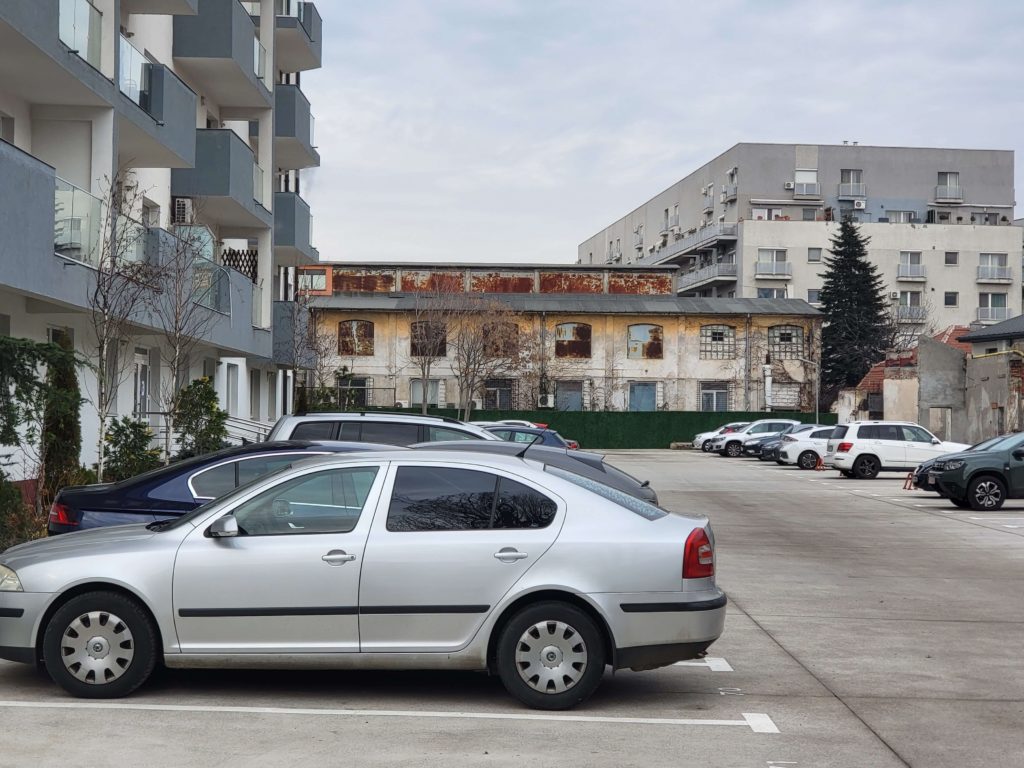
Abandoned buildings often have their own thermal life and sensorial regimes. The humidity accumulated through broken windows and collapsing roofs often amplifies the sensation of cold in the winter months. Then, there are the smells (Dzenovska 2022), which range from mould to wet bricks, dust, chemicals, and animal and human traces (see Fig 5). Although filtering and reducing the city noise, the mixture of glass pieces and debris produces a particular scratchy noise I encountered in many such sites. While cities, especially large cities such as the crowded and dense car-dominated Bucharest, produce the “intensification of nervous stimulation which results from the swift and uninterrupted change of outer and inner stimuli” (Simmel 1950/1903: 410); urban emptiness shields visitors from sensory overstimulation but attunes the senses to a limited number of, but pronounced, sensorial experiences.

As Dzenovska et al. 2022 notes: “emptiness is not a new order, not even a condition, but a space of reconfigurations, and as such has a peculiar temporality that comes without a discernible directionality – either because there is no identifiable linear sense of ‘progress’ left, or because there are multiple, fragmented trajectories at play…. It is because of its radical openness that emptiness doesn’t fit into the logic of developmental, formative, normative, project, or world-making ways of thinking”. On my trips, I sought to mentally order the objects and the abandoned spaces that I encountered by matching objects with ‘historicist’ (Benjamin 1990) museum-like site histories, former place names, the objects’ former purpose, and their potential salvage value. Sometimes I saw myself as doing amateur salvage archaeology. For instance, I found a street sign in the rubble of a factory situated on the same street as a beautiful matches factory; it now hangs in my living room (Fig 6).
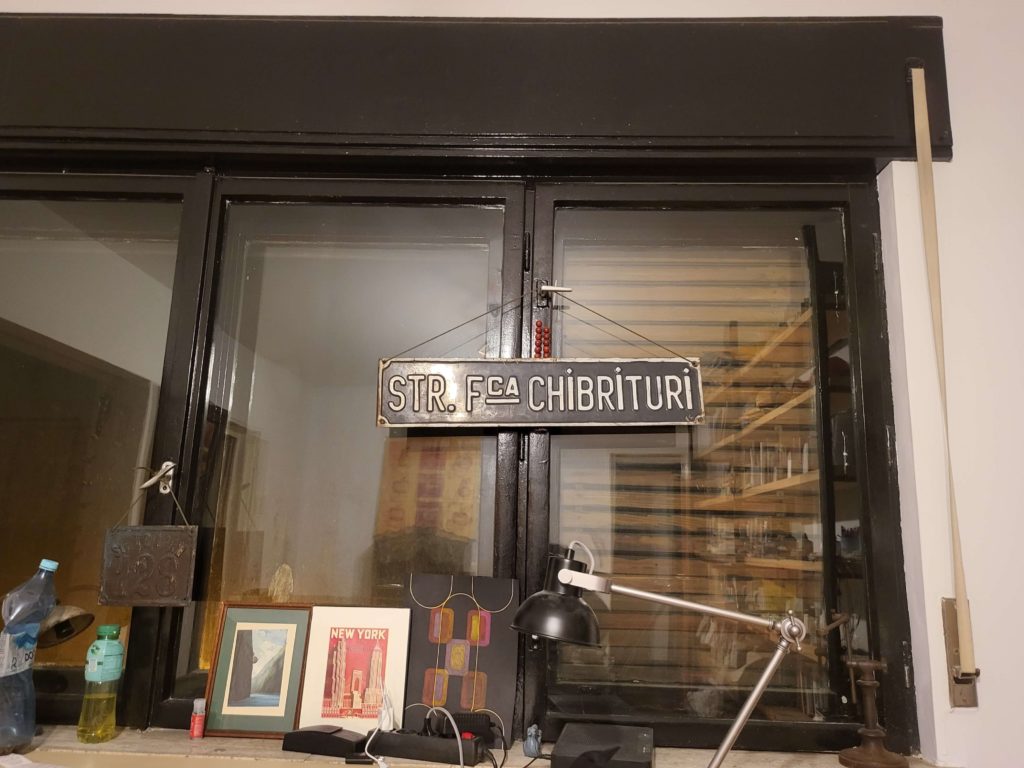
Other times I just enjoyed the indeterminacy and the sense of provisional possibility without trying to make much sense of it, but being aware that such spaces and landscapes would not last for long. I was, and still am, uncertain that whatever replaces former industrial buildings is better than the pre-socialist and socialist built forms. I am also unsure if the pre-socialist and socialist built forms were better than whatever stood there before them. I kept asking myself who benefits from these transformations, other than successive forms of industrial and real estate interests. Simultaneously, over time, I also became somewhat sceptical of ‘not-in-my-back-yard’ rhetoric, and wary that ‘old-timer’ discourses have been around (Osman 2016) for as long as modern Bucharest has existed. Such discourses obscure the steady production of serial emptiness, hiding cycles of demolition and reconstruction in the history of the city. At least for those industrial buildings that seemed older or more valuable architecturally (Fig 7), I experienced, and still experience, anxiety and sorrow that demolition foreclosed both remembrance of the dead (urban) forms (Benjamin 1990) and other, potentially non-enclosed, more fluid future uses of the city.
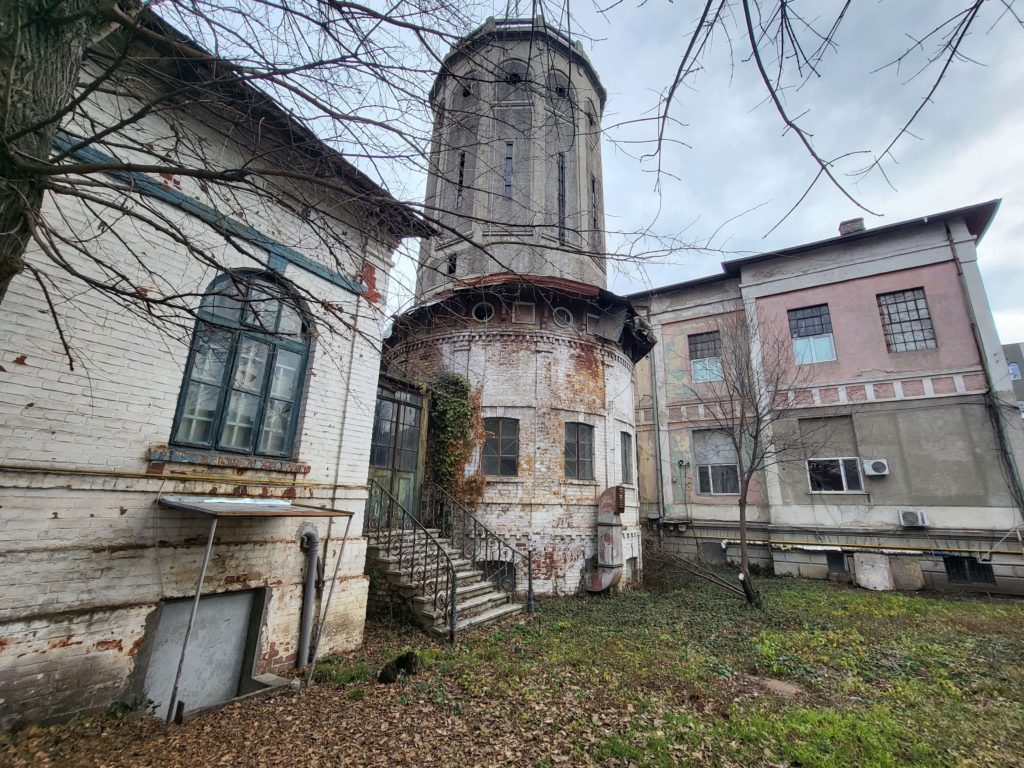
By the time I became curious about such areas in 2005-06, I was used to uncertain and in-between spaces. During my childhood and teen years in the 1980s, the large 1970s housing estate neighbourhood (Chelcea & Marin 2020) where I lived underwent densification. Additional, lesser-quality high-rise apartment buildings were built in the 1980s, creating construction discomfort for earlier residents. While those empty or unfinished construction spaces (which often functioned as a playground for neighbourhood kids) gave me a sense of a future-oriented emptiness with a deadline, ex-industrial spaces allow me to indulge in the naïve illusion that I can glimpse the past through those remains (Fig 8).
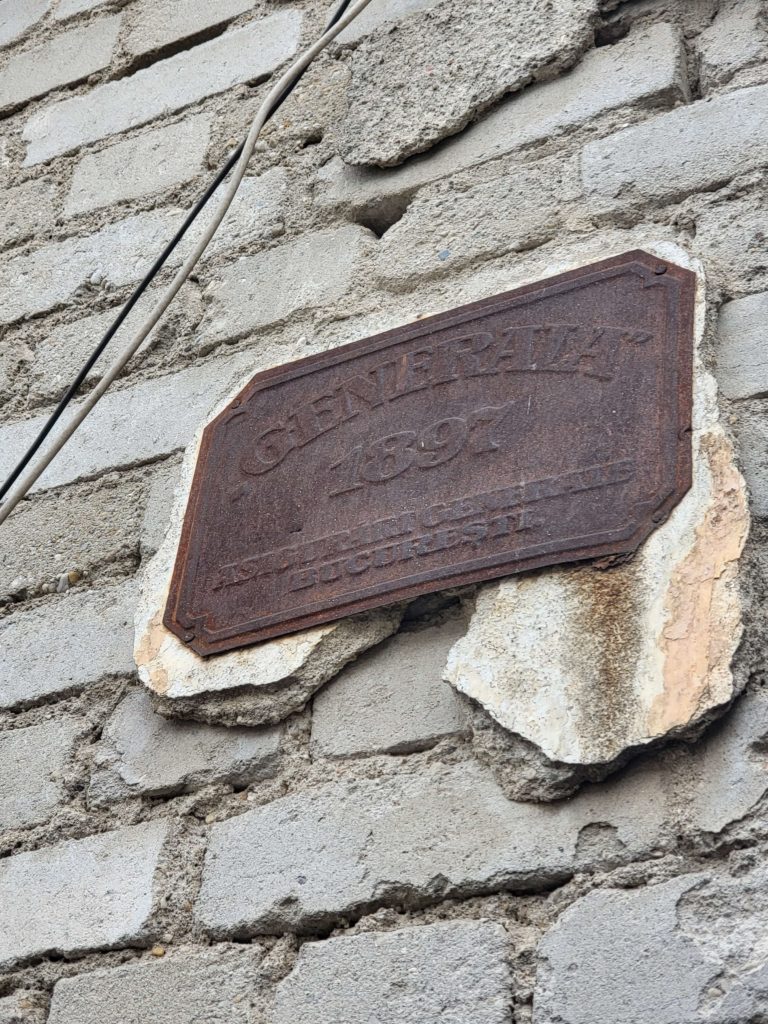
Postsocialist emptiness is not so much an individual experience, but rather a collective and a political framework, and a socially organized reality (Dzenovska et al. 2022). I’ve been aware that my interest and experience in such sites were not widely shared, and that it was experienced differently by others who used such spaces in very different ways. While privileged subjects like myself roam around extracting intellectual experiences, such spaces have functioned as a mining basin for the underclass who engage, informally, in what scholars of industrial ecology call ‘urban mining’. Recycling centres for metals popped up and lasted until the factories were depleted of iron, copper cables, and aluminium in each cluster of industrial sites that form the ex-industrial areas of Bucharest (Fig 9). Sometimes, families in such industrial neighbourhoods also recycled bricks, storing them on site, in front of their house, or in their yards.
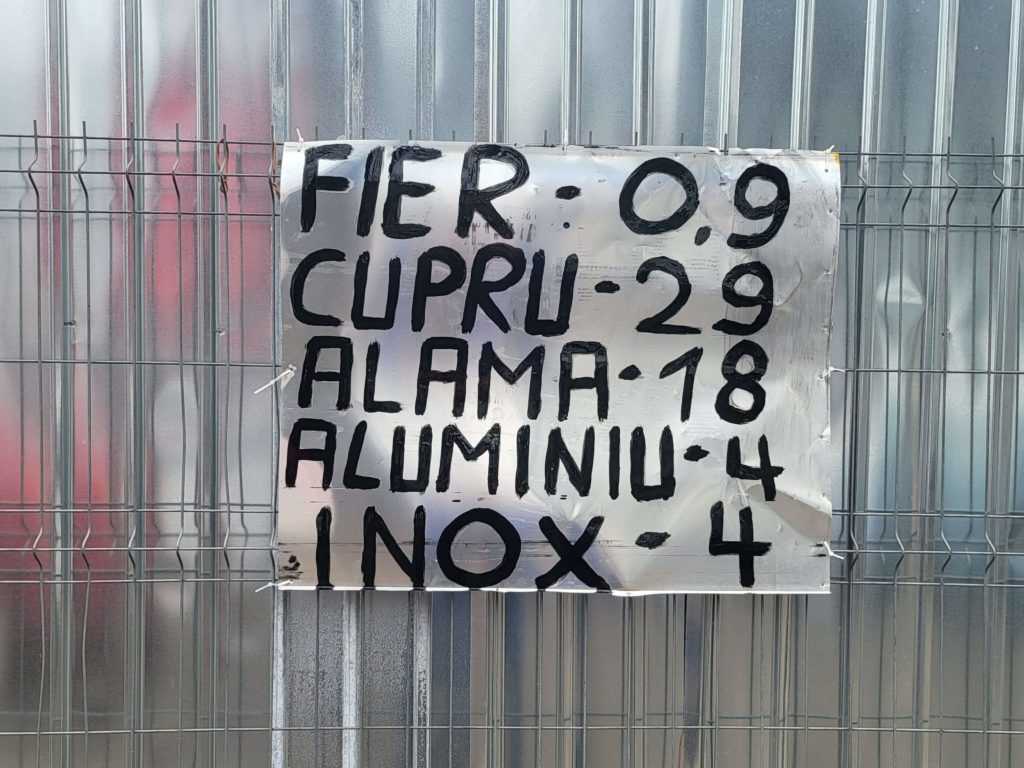
As ex-industrial empty spaces become unfinished, open objects and spaces and security-free areas, and shed their familiar and easily recognizable usage, they attract people whose lives are in ruins. In January 2023 while I was trying to make sense of what had become of the sizeable ruins of a centrally located former beer factory – a couple of hundred metres away from the building of the Romanian Parliament – I noticed some houses nearby had recently been demolished. The very vicinity of that sizeable land lot, where about a hundred mainly Roma families live, has become an island of ‘evictability’ (van Baar 2016). As I was contemplating entering the fenceless yard to better observe the abandoned house (Fig 10), two men who looked 50-60 years old asked me what I was looking for. As I understood from our conversation, they were both evacuees from nearby houses.
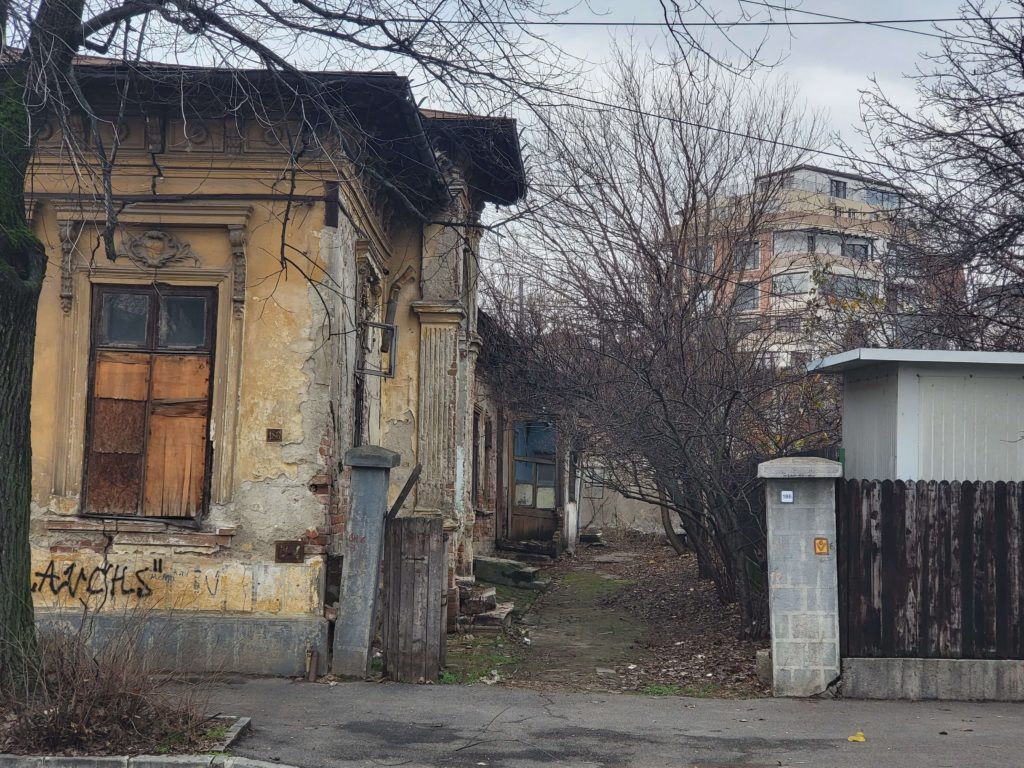
According to them, the tenants from the ‘restituted’ (Chelcea 2021) house were tied to the economy of the nearby flower market located on that block. After the eviction, the tenants moved elsewhere. After one of the two men indicated where he has lived as a tenant for 36 years – pointing to a three-storey high 1920s tenement nearby building – they told me they now live in the abandoned house that I was trying to see. One still had his official address on his identification card, even though he had been forced out. They also told me of another person, a woman, who had also visited the day before; they accompanied her to the beer factory site in order to protect her from ‘junkies’ who use that space.
While I have not seen any junkies, their story is perhaps illustrative of the usage and moral hierarchy of the place for residents. Their framing of the ex-industrial site points to the labour and power needed to keep a place empty and maintain the hierarchies of access to them. While some places need to be ‘strategically empty’ (Pank 2022), others – such as this abandoned beer factory – invite marginal people. Sometimes, security personnel and gatekeepers are removed in order to encourage people to extract construction materials so as to facilitate the buildings’ collapse, especially if the site has landmark status and therefore can’t be demolished immediately. An imminent sign of upcycling of a large block of 19th-century worker houses is the recent emergence of an aparthotel building located on the same street and facing those ruins, and, equally, the display by the entrance to the building of an English-language story of the crumbling ruins across the street (see Fig 11).

Aside from supporting urban mining, representing a refuge for homeless people, and acting as a playground for neighbourhood kids, such spaces also function as temporary refuge for stray cats and dogs. Sometimes fed by security guards in order to make them function as sentinel organisms (Gramaglia 2013), dogs alert the guards of potential night-time intrusions, when the site owners pay for protection, so the guards develop a working relationship with them. At one site, besides more common urban birds, I also saw pheasants living in the bushes and trees that began to occupy the dormant ex-industrial site. While their ecological contribution may be important for water retention and absorbing heat during the summer, such swaths of land with degraded soils have also attracted ragweed, a highly allergenic plant (of which I became keenly aware three years ago). An abandoned hydro-technical part of Bucharest’s water infrastructure – Parcul Vacaresti – has even been declared an urban natural park (Cotoi 2022), as it started to attract frogs, snakes, migrating birds, otters, and foxes. Some of these sites, or parts of them, have also been incorporated as restaurants, clubs, coffee shops, and venues for indoor sports (martial arts, rock climbing) in the culinary and entertainment economies of the city’s middle class (Fig 12).

Aside from the struggles for meaning (Chelcea 2014) and the material struggles of people infinitely less privileged than myself, such sites might be interesting for thinking about the relations between cities, distance, and emptiness. Often, cities purposefully produce (usually) remote empty spaces to ensure their metabolic flows and to urbanize nature (Gandy 2003), as is the case with many cities who have enforced restrictive pollution standards and set limits on the activities populations living in their watershed (Soll 2013) can engage in. Instead of situations of gradual decay, ‘strategic emptiness’ (Pank 2022) is thus a part of the governmentality and environmentality deployed by large cities over territories that are exterior to them. While an integral part of urbanization (Angelo & Wachsmuth 2014), strategically empty spaces are geographically remote from cities.
By contrast, in the cases I described above, emptiness is a moment and a process embedded in underclass economies, hipster economies, and especially in the ‘second circuit of capital’ centred on real estate (Harvey 1978). As such, urban emptiness may or may not mean remoteness. While “emptiness is…a space of reconfigurations, and as such has a peculiar temporality that comes without a discernible directionality” (Dzenovska et al. 2022), in its urban forms it is sometimes embedded in, sometimes bypassed by, powerful financial cycles, thus generating sometimes predictable futures (e.g. museification, new built gentrification) and sometimes permanent temporariness in fast and slow historical cycles.

This is an Open Access article, distributed under the terms of the CC-BY (Creative Commons Attribution 4.0 International) licence, which permits unrestricted re-use, distribution, and reproduction in any medium, provided the original work is properly cited.